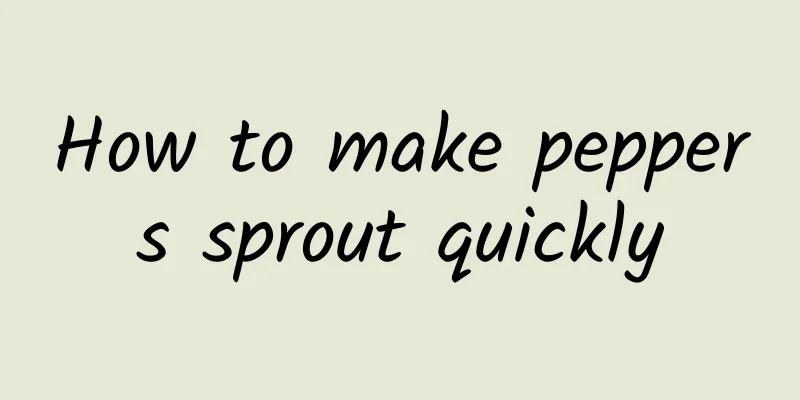High-yield cultivation technology of edamame

|
In recent years, edamame has been very popular in domestic and international markets. In order to meet market demand, many farmers began to grow edamame. However, in order to obtain high yields of edamame, it is necessary to master the correct planting techniques and management methods. Let’s talk about the high-yield cultivation techniques of edamame. 1. Variety selection Choosing edamame varieties that are suitable for local climate and soil conditions is the key to successful edamame cultivation. When choosing varieties, be sure to choose edamame varieties that have strong adaptability, good comprehensive disease resistance, large market demand, not easy to age, high yield and good quality. Such as Star 35, Fujian Black Beans , Hunan Fresh Edamame, Tianjin Xianghe Edamame, Zaoguan, Taiwan 48, Shenlong Jade, Starry Sky and other varieties. 2. Sowing and Management Edamame prefers high temperature and strong sunshine, and is mostly sown in spring and summer. The specific sowing time should be determined according to local climatic conditions and market time. When the temperature is stable at above 15℃, sowing can be carried out. Generally, 5 to 8 kilograms are sown per mu, the sowing density is 25-30 cm, and about 20,000 seedlings are maintained per mu. Edamame is mostly sown by direct broadcasting, which means sowing the seeds directly in the field. 3. Field Management During the growth period of edamame, a series of field management measures are needed, such as weeding, watering, and fertilizing. When the seedlings grow to 2 to 4 leaves, you can spray herbicides to promptly remove weeds in the field to prevent weeds from competing with edamame for nutrients and water; drought is prone to occur in the early stages, and when the drought is severe, watering is necessary to maintain soil moisture and promote the growth of edamame; during the flowering and podding period of edamame, 100 to 150 grams of 99% potassium dihydrogen phosphate diluted with 20 kilograms of water can be used per acre and evenly sprayed to provide the nutrients needed by the edamame and improve yield and quality. 4. Pest and disease control During the growth process of edamame, it will be attacked by various diseases and pests, such as anthracnose , rust, aphids, pod borer, beet armyworm, etc. In order to ensure the yield and quality of edamame, regular spraying and effective prevention and control measures are required. Here are some common pest control methods: 1. Anthracnose: Anthracnose is a common fungal disease that causes round or oval spots to appear on edamame leaves. Anthracnose can be controlled by using pesticides, such as spraying with carbendazim, methyl thiophanate and other pesticides. At the same time, strengthening field management and improving plant disease resistance are also key. 2. Rust: Rust is a disease caused by fungi that mainly harms the leaves and stems of edamame. Rust can cause yellow or green spots on leaves, which in severe cases can affect photosynthesis and yield. To prevent and control rust, you can use triadimefon, propiconazole and other pesticides for spraying. 3. Aphids: Aphids are a common pest that suck the juice of edamame, causing slow plant growth and reduced yield. To control aphids, you can use imidacloprid, acetamiprid and other pesticides for spraying. At the same time, biological control methods can also be used, such as using natural enemies for control. 4. Stem borer: Stem borer is a common Lepidoptera pest that eats the leaves and fruits of edamame. To control stem borers, you can use Bacillus thuringiensis, chlorantraniliprole and other pesticides for spraying. At the same time, physical control methods can also be used, such as using black light to lure and kill adult insects. 5. Harvest and Storage The time and method of harvesting edamame have a great impact on its yield and quality. Generally speaking, edamame should be harvested when the pods are full and green in color. Harvesting too early or too late will affect the yield and quality of edamame. Harvesting can be done manually or mechanically. Manual harvesting can ensure the integrity and quality of edamame, but it is less efficient. The following points need to be noted when storing edamame: First, the edamame should be placed in a cool, dry, ventilated place to dry and cool down; second, the edamame should be stored by category, and edamame of different varieties and grades should be stored separately; finally, the storage condition of the edamame should be checked regularly during storage. Generally, the storage time should not be too long to avoid spoilage or rot. That’s it |
<<: When and how to prune ground roses
>>: High-yield planting technology of Litsea cubeba
Recommend
Diseases and Pests of Lilac and Their Control
Common diseases of lilac There are two common dis...
Honeysuckle planting method and management technology
Honeysuckle, scientifically known as Lonicera, is...
Prevention and treatment methods of rose leaf disease
Rose leaf disease Leaflet disease is a common phy...
Is Daphne afraid of freezing?
1. Are you afraid of freezing? Daphne is a plant ...
How to care for and water the iron tree?
Cycas revoluta, as a common ornamental plant, is ...
The leaves of Daphne odora droop
1. Improvement Methods 1. Replace the potting soi...
Valerian cultivation methods and precautions
1. Maintenance methods 1. Soil: The soil for grow...
How to grow copper coin grass in winter
1. Convert hydroponics to soil culture Due to the...
When is the best time to sow daisy seeds?
Sowing time of daisy seeds Beach daisy is suitabl...
Is Gesang flower poisonous?
1. Contains highly toxic substances Its sap is po...
How to grow arrowroot and what to pay attention to
Growth habits of arrowroot Arrowroot likes warm, ...
How to grow small longevity flowers and precautions
Growth habits of Kalanchoe miniata The small kala...
How to maintain Marcus succulent
Marcus Succulent Growing Conditions Marcus succul...
How to breed Qianzhita and what to pay attention to
Reproduction method of the tower of saki The comm...
How many years does it take for the peace tree to bear fruit?
Introduction to Planting Peace Trees The peace li...









